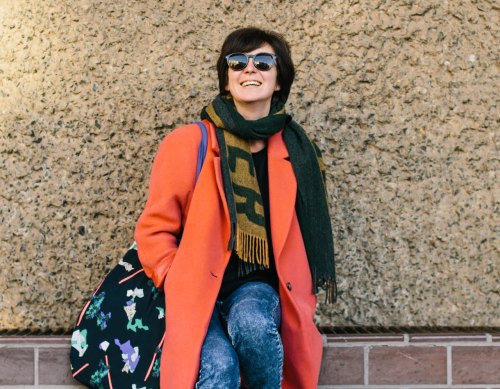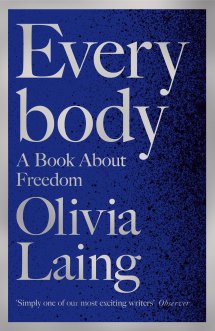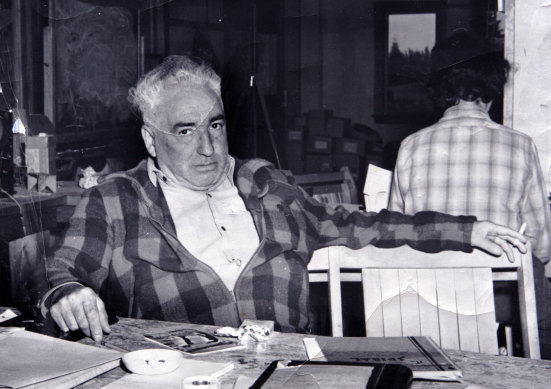This was published 3 years ago
Trauma, pleasure, pain, oppression: new book breaks down the human body
By Justine Hyde
Olivia Laing started Everybody: A Book About Freedom during the refugee crisis of 2015. She finished writing it as the first cases of COVID-19 broke out. A mass movement of displaced bodies, and a virus that has killed thousands and ruptured society. The British writer and critic’s prescient study reveals the contradictions and multiplicities of the human body: as vehicles of oppression and of resistance; sites of both pleasure and pain.
Laing blends cultural criticism, theory and memoir in the same deft fashion as her earlier non-fiction works The Lonely City: Adventures in the Art of Being Alone and Funny Weather: Art in an Emergency. She excavates similar anxieties and concerns – climate, neo-liberal politics, patriarchal capitalism – as in her debut novel, Crudo, a work of auto-fiction written in real-time during 2017.

Olivia Laing’s expansive socio-political inquiry traverses territories of bodily vulnerability.Credit: Liz Seabrook
Everybody orbits around Laing’s fascination with the work of Wilhelm Reich, a protege of Sigmund Freud. Reich believed that the human body stores trauma as tension. In his system of “body-based psychotherapy”, touch is used to unfreeze emotional pain. Laing learns of Reich after visiting a practitioner of his techniques.
“I’d had a strong sense since childhood … that I’d locked myself around a mysterious unhappiness, the precise cause of which I didn’t understand,” she says. Her search to understand her body becomes a life-long project: “It was this dumb language I longed to understand.”

Credit:
The body’s “stubborn, elusive tongue” leads Laing to follow the relationship of Reich’s work to the liberation movements of feminism, civil rights and LGBTQIA+ equality, struggles that were all fought over the right to be free of oppression based on the kind of body people are born into.
Growing up, in a gay household in Britain during an era of state-sanctioned homophobia springing from the AIDS crisis and enshrined in Section 28 laws, pressed on Laing “how bodies are positioned in a hierarchy of value”.
While bodies are fragile and precarious objects whose freedoms can be curtailed, Laing also understands that they can be a force for freedom. From her first Gay Pride at age nine, through participation in environmental direct action, Laing learnt how to use her body “as a tool of resistance”.
This was her gateway into understanding Reich’s essential dynamic – “that the political world can make bodies into prisons, but that bodies can also reshape the political world”.
Laing’s expansive socio-political inquiry traverses territories of bodily vulnerability: illness and its causes; incarceration and prison reform; artistic movements; spectrums of gender and sexuality; and the rhythms of social change. Everybody fuses individual subjects as diverse as the Marquis de Sade, Kate Bush, James Baldwin and Oscar Wilde into a compendium that is deeply researched and thoroughly readable, as cerebral as it is entertaining.
It is Laing’s use of biographical detail that makes her writing so engaging. As in her earlier works, she draws on her knowledge of contemporary art. She illuminates the complex interplay between the lives of artists, their relationship to their bodies, and their artistic practice.

Sexual liberation and escaping from repression were central to Wilhelm Reich’s ideas.Credit:
The reader is gifted with insights into the American abstract painter and desert mystic Agnes Martin, who kept her sexuality closeted and refused gender labels. Martin lived a life of monkish self-denial, struggling with schizophrenia that went undiagnosed until later in life. Laing also spotlights the Cuban American performance and video artist Ana Mendieta, whose work centred on her body as object and subject. Rejecting American feminism as white and middle-class, Mendieta died in suspicious circumstances, falling from her 34th-floor apartment in New York while in the company of her husband, sculptor Carl Andre, who was acquitted of her murder.
Sexual liberation and escaping from repression were central to Reich’s notions of bodily freedom. During his time in Weimar Berlin, he advocated for access to contraception, legal abortion and safe sex, Reichian ideals that were later revived by feminist thinkers, including Andrea Dworkin. Laing gives a visceral description of Dworkin’s escape from domestic abuse, an ordeal imprinted on Dworkin’s body that gives context for her radical thinking and activism against sexual violence and misogyny.
In a chapter called “Unwell”, Laing delves into the lives of writers Susan Sontag and Kathy Acker, recalling the contrasting but equally harrowing accounts of their cancer treatments. Sontag pursued the most radical and aggressive interventions available, while Acker opted for alternative therapies and eschewed conventional treatment. Both paths are borne out in their writing, both were ruinous for their bodies.
Laing traces the fates of bodies that are discriminated against and criminalised because of skin colour. Over-represented in prisons, people of colour disproportionately bear the psychological effects of incarceration: bodily humiliation, deprivation and disconnection from others. Laing’s account of the civil rights movement, and the fates of its leading actors – Bayard Rustin, Martin Luther King jnr, Malcolm X – remind us that social changes come at a high personal cost, are hard won and are never permanent. She points to the recent rise of neo-fascism, and the Black Lives Matter movement, to show that “everything can be undone, and every victory must be refought”.
Reich’s permissive attitude to sex and his affiliation to communism meant exile from Europe. His attempts to integrate a political framework into his psychotherapy practice led to his eventual rejection by Freud and his peers. He lived his later life in the United States, paranoid and formulating increasingly bizarre pseudo-scientific ideas that eventually led to a dogged investigation by the US Food and Drug Administration. Reich was later imprisoned, where he died alone.
In reclaiming Reich’s project of bodily freedom from under the cloud of his later scientific discreditation, Laing builds a conceptual frame to understand her own body. Through the book, she hints at a wavering alliance to gender, though it is not until near the end, and rather quietly, that she identifies as trans and non-binary.
By channelling Reich in Everybody, Laing has written arguably her most accomplished book yet. She has resurrected Reich’s dream of the free body, and in doing so she dares us to “imagine … what it would be like to inhabit a body without fear … just imagine the world that we could build”.
Everybody, Olivia Laing, Picador, $44.99.
The Booklist is a weekly newsletter for book lovers from books editor Jason Steger. Get it delivered every Friday.